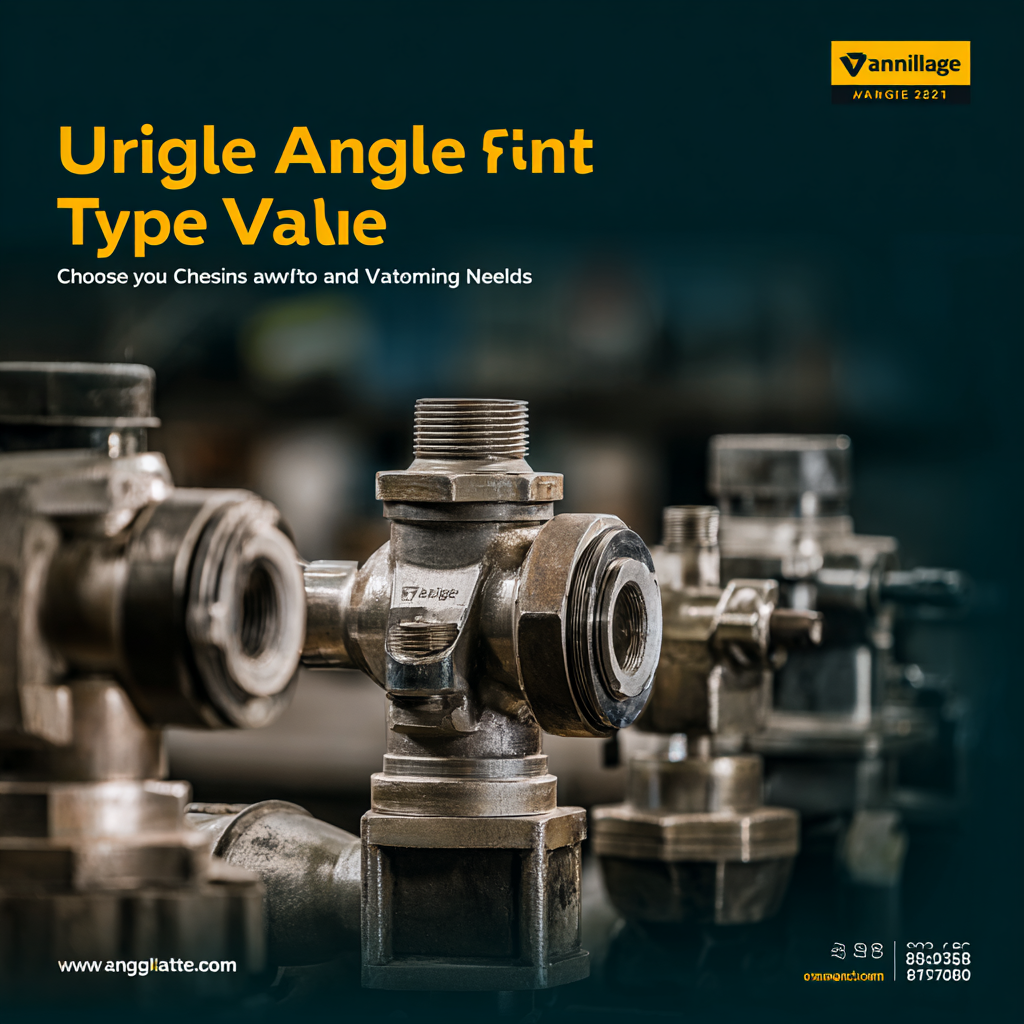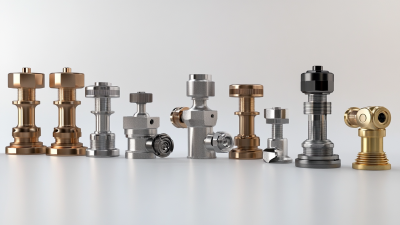 In the rapidly evolving world of plumbing and engineering, the selection of the right components can significantly impact efficiency and performance. One such crucial component is the angle valve, a device that controls the flow of fluids in various applications. According to industry expert John Smith, “Choosing the right angle valve can make all the difference in system reliability and maintenance efficiency.” With this insight in mind, this guide aims to navigate the diverse types of angle valves available in 2025, equipping you with the knowledge to make informed decisions tailored to your specific needs.
In the rapidly evolving world of plumbing and engineering, the selection of the right components can significantly impact efficiency and performance. One such crucial component is the angle valve, a device that controls the flow of fluids in various applications. According to industry expert John Smith, “Choosing the right angle valve can make all the difference in system reliability and maintenance efficiency.” With this insight in mind, this guide aims to navigate the diverse types of angle valves available in 2025, equipping you with the knowledge to make informed decisions tailored to your specific needs.
As the market continues to innovate, understanding the different styles, materials, and functionalities of angle valves becomes paramount. From residential plumbing systems to industrial setups, the right angle valve can enhance performance, prolong lifespan, and ensure safety. This guide will delve into the essential aspects of angle valves, examining their structures, use cases, and the latest advancements in technology. Whether you are a seasoned professional or a newcomer, our ultimate guide will empower you with the information needed to select the best angle valve for your applications in the coming year.
Angle valves are essential components in various plumbing and industrial systems, known for their efficiency in regulating fluid flow. These valves are characterized by their distinctive L-shaped design, which allows for smooth directional changes in pipelines. According to a report by MarketsandMarkets, the global valve market is projected to reach $85.4 billion by 2025, with angle valves playing a significant role devido to their versatility and reliability in high-pressure applications.
One of the key features of angle valves is their ability to handle a variety of fluids, from water to hazardous chemicals. Their construction often incorporates durable materials such as brass and stainless steel, which are resistant to corrosion and wear. Additionally, the American Society of Mechanical Engineers (ASME) highlights that the proper selection of valve types, including angle valves, can lead to a 15% increase in system efficiency in industrial applications. Understanding these features ensures that users can make informed choices, optimizing both performance and safety in their systems.
| Valve Type | Material | Connection Type | Pressure Rating | Applications |
|---|---|---|---|---|
| Brass Angle Valve | Brass | Threaded | 150 PSI | Water, Gas |
| Stainless Steel Angle Valve | Stainless Steel | Welded | 300 PSI | Oil, Chemicals |
| Plastic Angle Valve | PVC | Socket | 100 PSI | Water, Drainage |
| Forged Steel Angle Valve | Forged Steel | Flanged | 600 PSI | High-pressure Systems |
| Bronze Angle Valve | Bronze | Threaded | 200 PSI | Marine, HVAC |
When it comes to choosing angle valves for residential applications, understanding the different types available in 2025 can significantly enhance your plumbing experience. Here are the top five angle valve types you should consider: compression, solder, threaded, push-fit, and ball angle valves. Each type offers unique benefits that cater to various needs, from ease of installation to durability and flow control.
**Tip:** When selecting an angle valve, assess the specific installation site and the water pressure requirements. For high-pressure scenarios, ball angle valves are often the best choice due to their robust construction and superior flow capabilities.
Additionally, consider the materials used in the angle valve’s construction. Brass valves, for instance, are known for their longevity and resistance to corrosion, making them a popular option for residential plumbing systems.
**Tip:** Always check for certification marks on the valves to ensure they meet safety and quality standards. Proper installation and regular maintenance can extend the lifespan of your angle valves, ultimately saving you money in the long run.
This chart illustrates the popularity of different types of angle valves based on the residential applications anticipated for 2025.
When it comes to selecting angle valves for your project, understanding the materials used is crucial. Angle valves can be made from a variety of materials, each presenting its own advantages and disadvantages. Common materials include brass, stainless steel, and plastic. Brass valves are known for their durability and good resistance to corrosion, making them an excellent choice for water supply systems. However, they may not be suitable for corrosive environments.
Stainless steel, on the other hand, boasts superior strength and resistance to extreme temperatures and corrosive substances. This makes it ideal for industrial applications or areas with harsh chemical exposure. Though typically more expensive, the long-term performance of stainless steel valves often justifies the initial investment. Meanwhile, plastic valves offer a lightweight, cost-effective alternative, perfect for low-pressure applications and where corrosion is a major concern. Their applicability, however, is often limited by temperature and pressure constraints. Understanding these material properties will help ensure you choose the right angle valve for your specific needs in 2025.
When it comes to angle valves, proper installation and maintenance are crucial for ensuring optimal performance, especially in a home environment where leaks can lead to significant damage. According to industry reports, improper plumbing installations account for nearly 20% of residential water damage claims, highlighting the importance of using high-quality angle valves and ensuring they are installed correctly.
Tips for installation include ensuring that the valve is aligned with the plumbing system and using the right sealant to prevent leaks. Regularly checking the valve for signs of wear or corrosion can also prolong its lifespan and enhance its efficiency. Additionally, keeping the valve clean and free of debris will help maintain their functionality.
In light of recent reports of flooding and damages due to faulty installations, it is essential for homeowners to choose reputable installation services. A thorough understanding of the specific needs of your plumbing layout can help in selecting the right angle valve. Always opt for a company with a solid track record and positive customer reviews to mitigate risks associated with water damage.

As we move into 2025, the design of angle valves is set to undergo significant transformations driven by advancements in technology and growing environmental concerns. One prominent trend is the integration of smart technology into valve systems. Smart angle valves equipped with IoT sensors can provide real-time data on flow rates, pressure, and potential leaks. This capability allows for more efficient monitoring and maintenance, reducing water waste and optimizing overall performance. The demand for automation in various industries will fuel the development of more sophisticated angle valve designs that seamlessly integrate with automated systems.

Another critical trend is the shift toward sustainable materials and eco-friendly manufacturing processes. With increasing regulatory pressures and consumer awareness regarding environmental impact, manufacturers are exploring alternative materials that offer both durability and efficiency. Moreover, innovative designs that minimize waste during production and enhance recyclability are becoming a vital focus. As sustainable practices gain traction, the angle valve market is likely to see an emergence of products that not only perform well but also contribute positively to environmental sustainability. This evolution will cater to a growing market that prioritizes both functionality and ecological responsibility in valve selection.






